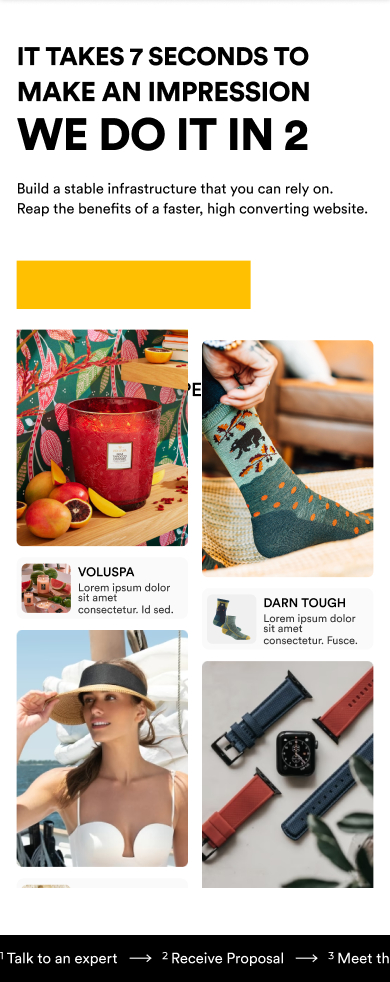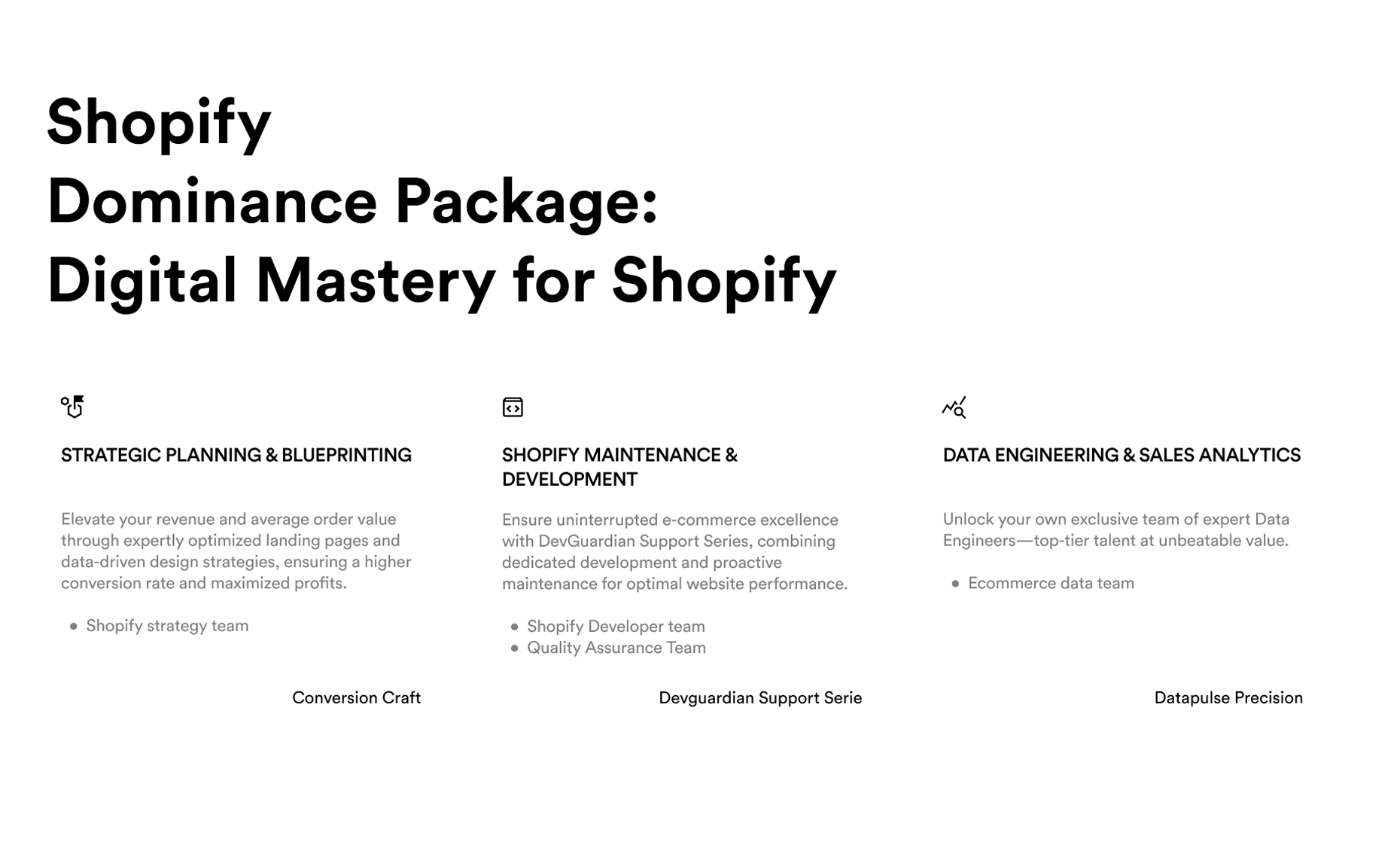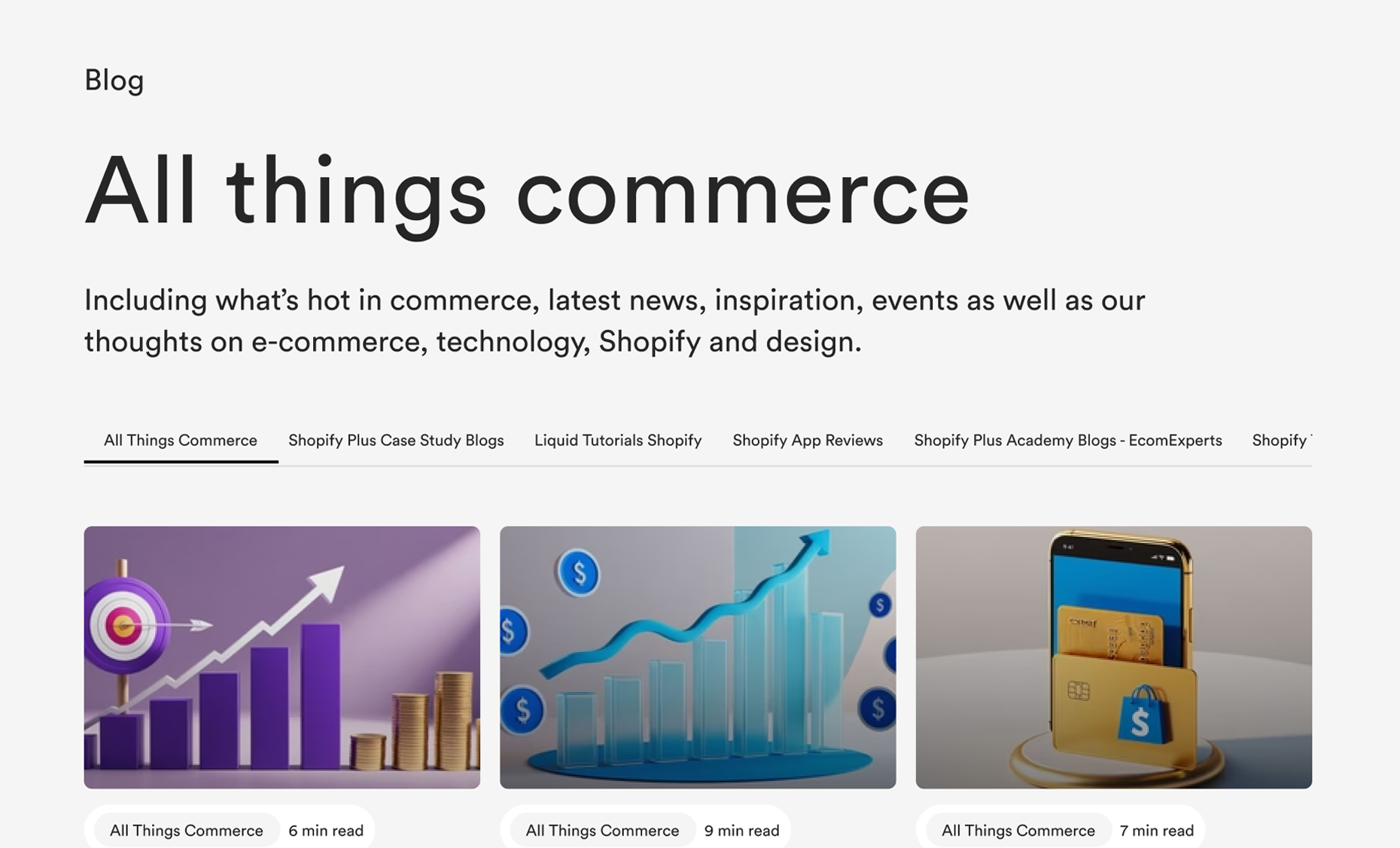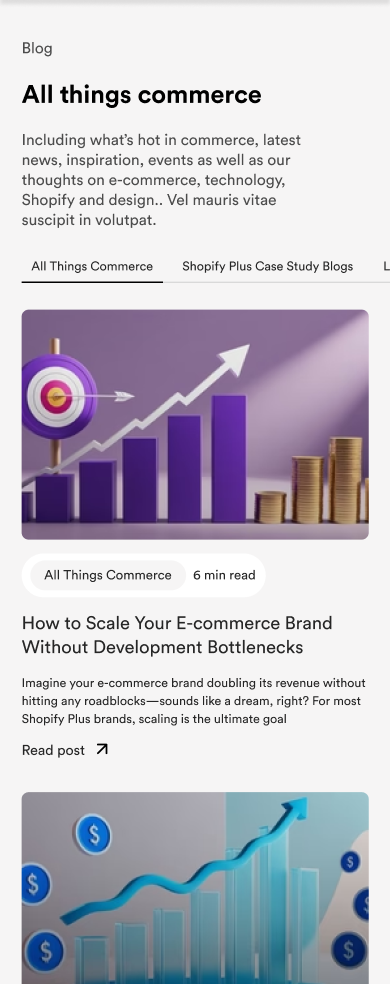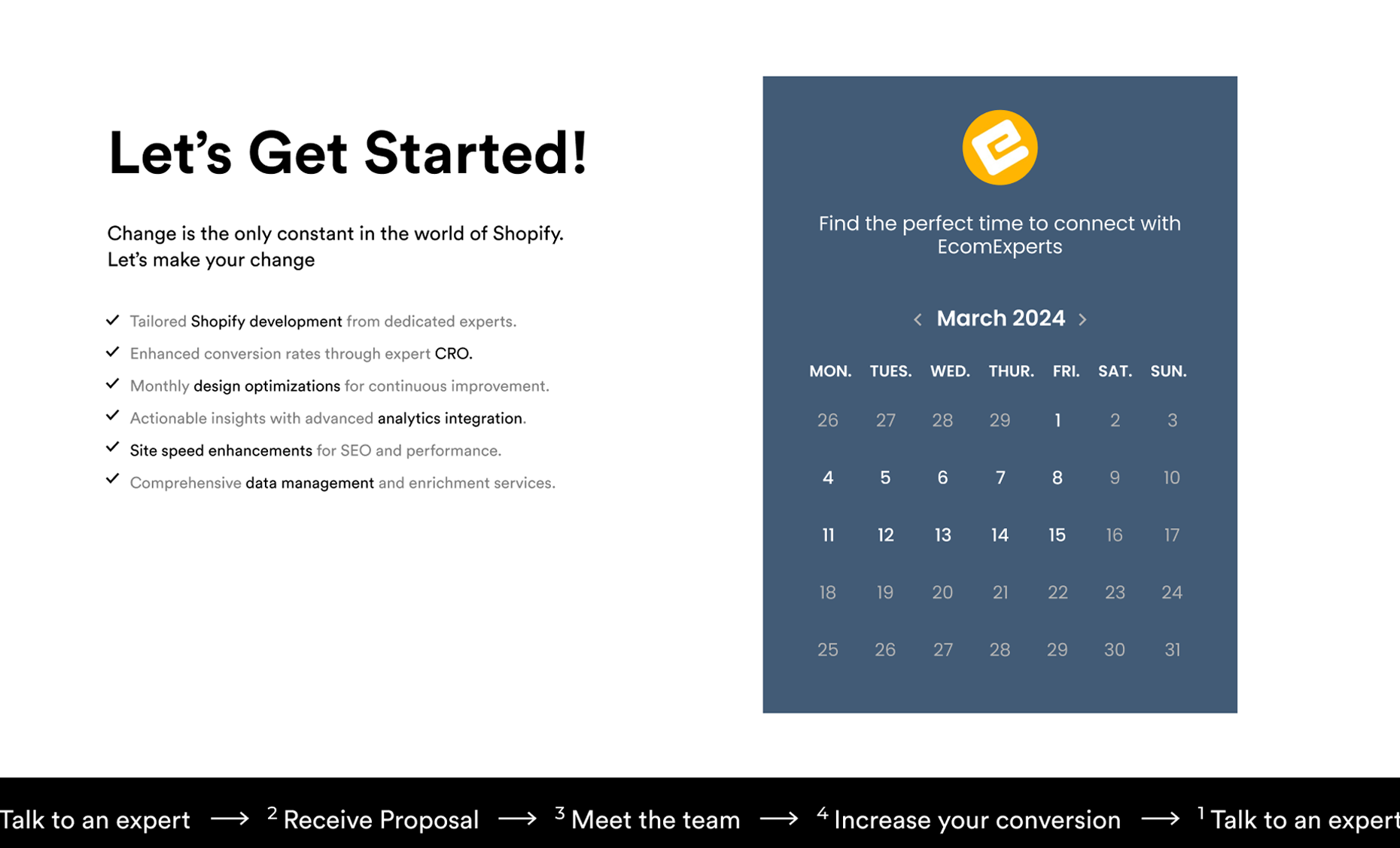Do you want to give your Shopify store a more professional and personalized look?
Are you tired of having the "Powered by Shopify" tag displayed on your website?
Well, you've come to the right place! In this article, we will guide you through the process of removing the "Powered by Shopify" tag and show you how to add your own branding elements. Let's get started!
Understanding the 'Powered by Shopify' Tag
Before we dive into the removal process, let's first understand what the "Powered by Shopify" tag is all about.
Simply put, it is a small text link that appears in the footer section of your Shopify store. This tag is added by default to let your customers know that you are using the Shopify platform to power your online business.
When you consider the significance of the "Powered by Shopify" tag, it's important to recognize that it not only serves as a branding element for Shopify but also as a symbol of trust and reliability for your customers. By displaying this tag, you are aligning your store with a well-established and reputable e-commerce platform, which can enhance the credibility of your business in the eyes of potential buyers.
What is the 'Powered by Shopify' Tag?
The "Powered by Shopify" tag serves as a way for Shopify to promote its platform and contribute to its brand visibility. It is essentially a marketing strategy employed by Shopify to gain recognition and spread awareness among e-commerce enthusiasts.
Moreover, the presence of the "Powered by Shopify" tag can also signal to customers that your online store is equipped with robust features and functionalities provided by Shopify. This can instill confidence in shoppers, knowing that they are navigating a secure and well-supported e-commerce environment.
Why Does Shopify Include This Tag?
Shopify includes the "Powered by Shopify" tag to showcase its user-friendly and reliable platform. By having this tag on your website, you are indirectly endorsing Shopify and helping them gain more exposure in the e-commerce industry. It's a mutually beneficial relationship where you benefit from Shopify's features and they benefit from your store's presence.
Furthermore, the "Powered by Shopify" tag acts as a form of word-of-mouth marketing, as visitors to your site may be intrigued by the platform and consider using it for their own online ventures. This tag not only highlights the partnership between your store and Shopify but also serves as a gateway for potential entrepreneurs to explore the capabilities of the platform for their business needs.
Importance of Branding in E-commerce
Now that we have discussed the basics of the "Powered by Shopify" tag, let's delve into the importance of branding in the e-commerce world and how it relates to this tag.
Branding plays a crucial role in the success of any e-commerce business. It is not just about having a logo or a catchy slogan; it is about creating a unique identity that sets you apart from your competitors.
A strong brand can build trust with customers, increase brand loyalty, and ultimately drive more sales. In the crowded online marketplace, branding is what helps customers remember you and choose your products or services over others.
How 'Powered by Shopify' Affects Your Brand
While the "Powered by Shopify" tag may seem harmless, it can have an impact on your brand identity. Some store owners may perceive it as a sign of dependency on a third-party platform, which can undermine their brand's credibility and professionalism. Removing this tag allows you to establish a stronger brand presence and maintain consistency throughout your website.
The Pros and Cons of Removing the Tag
Before you decide to remove the "Powered by Shopify" tag, it's important to weigh the pros and cons.
Pros:
- Enhanced brand visibility and recognition
- Increased credibility and professionalism
- Improved website aesthetics
- Ability to add your own branding elements
Cons:
- Potential loss of the association with the Shopify brand
- Less visibility and recognition for Shopify
Now that you are aware of the potential pros and cons, let's move on to the step-by-step guide for removing the "Powered by Shopify" tag from your website.
Removing the "Powered by Shopify" tag is a relatively simple process that can be done through the Shopify admin dashboard. By customizing your theme settings, you can easily hide or replace the tag with your own branding. It's important to ensure that your brand elements, such as colors, fonts, and messaging, are consistent across your website to create a cohesive brand experience for your customers.
Step-by-Step Guide to Remove 'Powered by Shopify'
Accessing Your Shopify Admin Panel
The first step is to log in to your Shopify admin panel. Once you are logged in, navigate to the "Online Store" section. This is where you can manage all aspects of your online store, from products to themes and settings.
Upon accessing the admin panel, you will be greeted with a user-friendly interface that provides a comprehensive overview of your store's performance. From tracking orders to managing inventory, the admin panel is your central hub for e-commerce operations.
Navigating to the Footer Section
In the "Online Store" section, click on "Themes" and then select "Customize" for the theme you want to edit. Next, locate and click on "Footer" in the customization menu. This will take you to the footer section of your theme. Here, you can fine-tune the appearance and content displayed in the footer of your online store.
The footer of a website is a crucial area that often contains important information such as contact details, links to policies, and now, the ability to customize or remove the "Powered by Shopify" text. By personalizing this section, you can enhance the overall branding and user experience of your online store.
Editing the Language Settings
Within the footer section, you will find the language settings. Look for the text that includes "Powered by Shopify" and make the necessary changes to remove or customize it to match your branding. Keep in mind that each theme may have a slightly different customization interface, but the general process remains the same. Take this opportunity to align the footer content with your brand voice and messaging strategy.
Saving Changes and Checking Your Website
After making the desired changes to the language settings, don't forget to save your changes. Once saved, navigate to your website and refresh the page to see the updated footer without the "Powered by Shopify" tag. This final step ensures that your customization is live and visible to your website visitors, providing a seamless and professional user experience.
Troubleshooting Common Issues
'Powered by Shopify' Still Appears After Editing
If you followed the steps above and the "Powered by Shopify" tag still appears on your website, there might be a couple of reasons for this issue. First, double-check that you saved your changes in the Shopify admin panel. If you did save, it's possible that your browser is displaying a cached version of the website. Clear your cache and try refreshing the page again.
Moreover, another reason for the persistent display of the "Powered by Shopify" tag could be due to a third-party app or script that has been integrated into your website. These external elements might be injecting the tag into your web pages, bypassing your direct edits. To address this, review all the apps and scripts running on your site and disable any that might be causing the interference.
Dealing with Theme-Specific Problems
Occasionally, certain themes may have their own unique settings or coding that override the changes made in the language settings. In such cases, you may need to consult the theme developer's documentation or seek help from a Shopify expert to make the necessary modifications.
Furthermore, when confronting theme-specific issues, it's essential to understand the structure and hierarchy of your theme's files. Some themes have multiple layers of customization, such as sections, templates, and snippets, which can impact how changes are reflected on the front end.
By delving into the theme's architecture and pinpointing where the "Powered by Shopify" tag is being generated, you can tailor your troubleshooting efforts more effectively.
Alternatives to Removing 'Powered by Shopify'
Customizing Your Shopify Footer
If you prefer to keep the "Powered by Shopify" tag but want to add your own branding elements, you have the option to customize your Shopify footer. Explore the customization settings within your theme to add your logo, social media links, and other brand-specific elements. This way, you can leverage the strength of both your brand and the Shopify platform.
Adding Your Own Branding Elements
Giving your Shopify store a unique and personalized touch involves adding your own branding elements. Consider incorporating your logo, color scheme, and fonts throughout your website to create a cohesive and memorable brand experience for your customers.
Now that you have a better understanding of how to remove the "Powered by Shopify" tag and add your own branding elements, it's time to take action and create a website that truly represents your brand!
Conclusion
Removing the "Powered by Shopify" tag allows you to establish a stronger brand identity and maintain consistency throughout your website. By adding your own branding elements, you can create a unique and personalized online store that truly represents your business.
Remember, if you need any assistance with customizing your Shopify store, Ecom Experts is here to help. As Shopify experts, we offer a comprehensive range of services to support your e-commerce journey, from store setup and design to app integration and marketing strategies. Trust us as your one-stop solution for everything Shopify.



